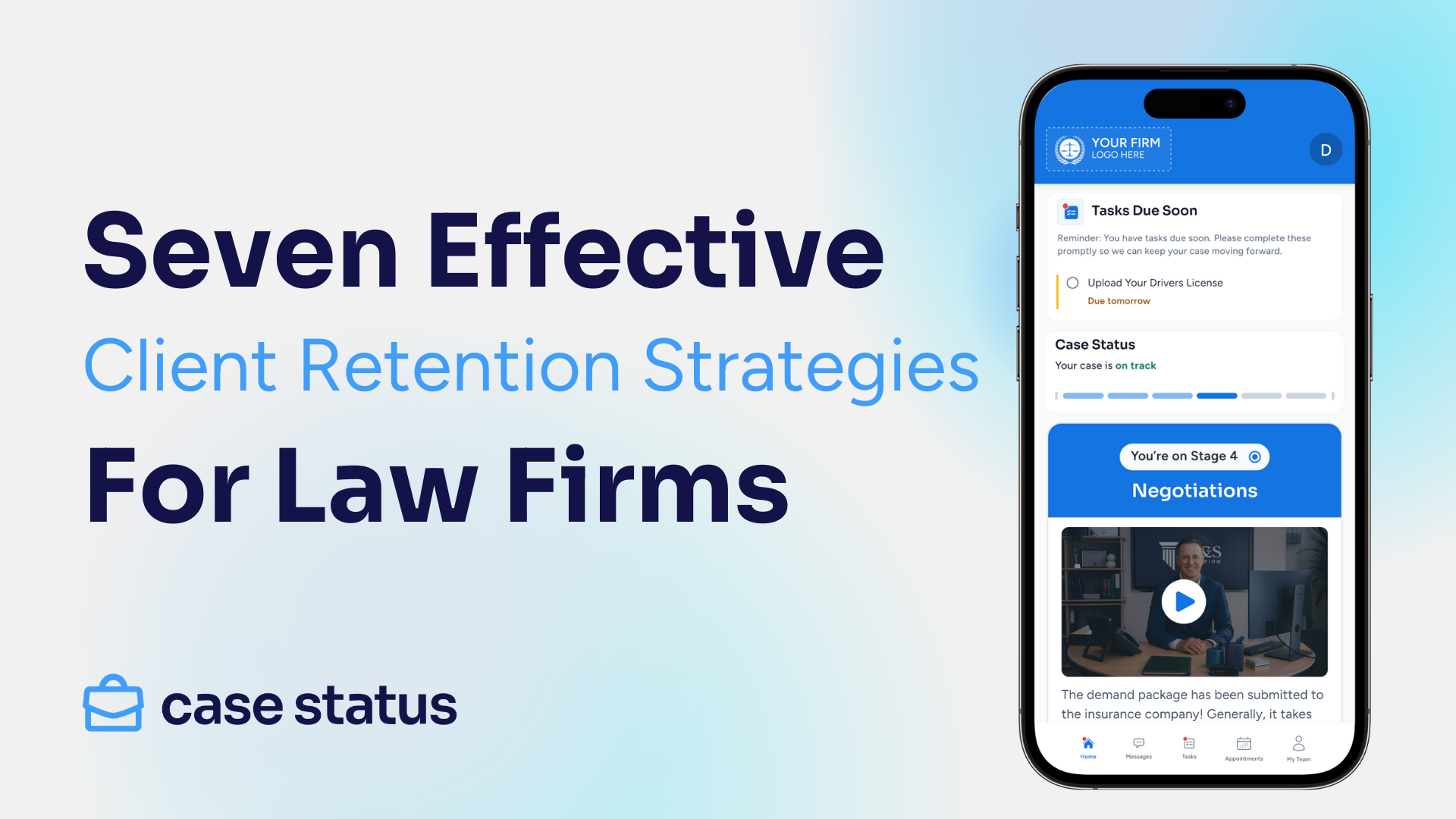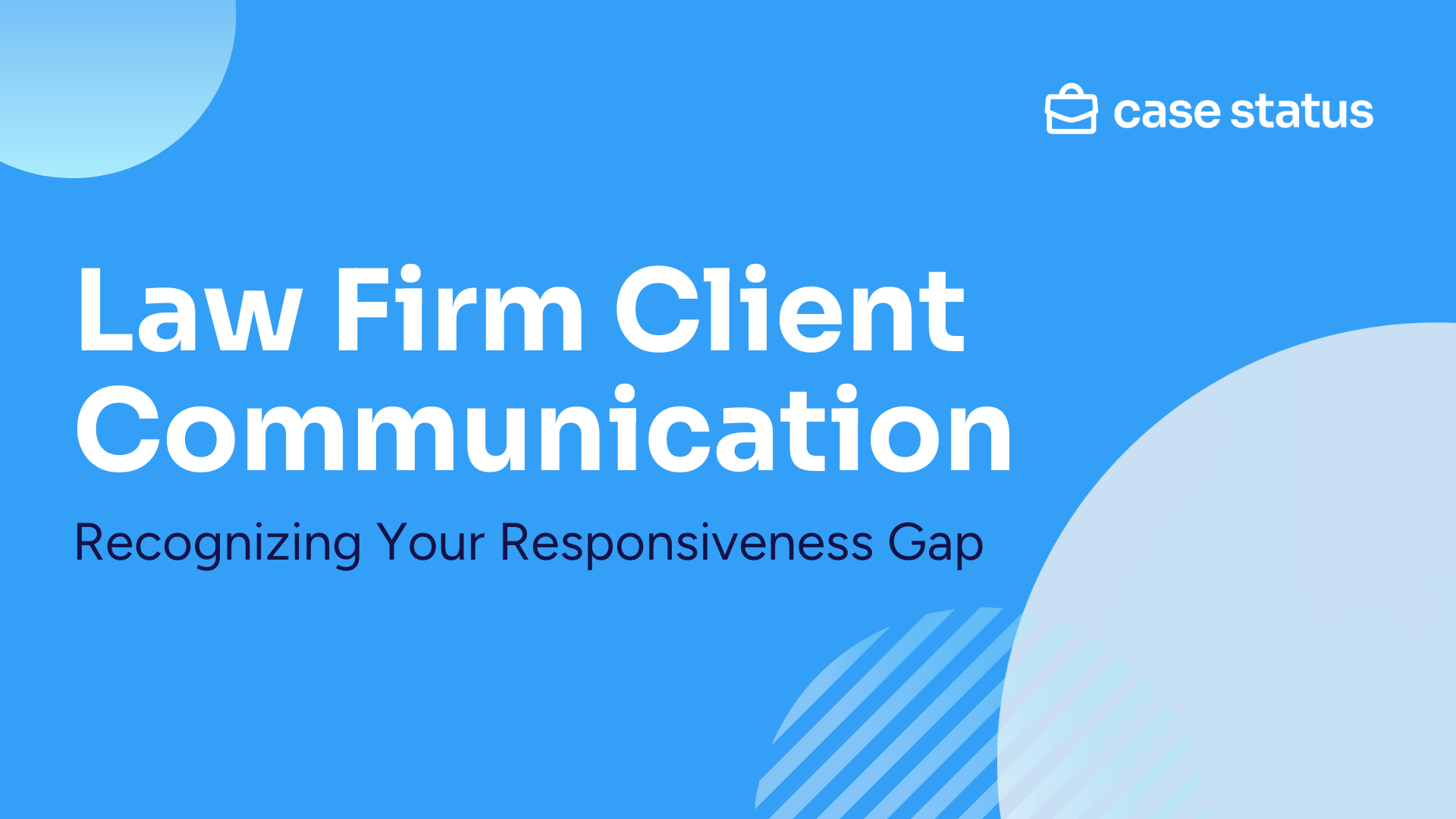.png)
When law firms talk about growth, technology, and results, it’s easy to forget the simplest truth: happy clients are the best business strategy. That was the theme of the recent webinar The Grandma Test: 7 Proven Strategies to Keep Clients Happy and Ethics in Check, featuring Ken Hardison (Founder & President, PILMMA), Ben Leader (Managing Partner, Elrod Pope Law Firm), and Paul Bamert (VP of Marketing, Case Status).
The panelists shared real-world strategies that law firms can implement to strengthen relationships, prevent ethical pitfalls, and build practices that last. At the heart of the conversation was the idea that law is still a people-first business, and that client experience drives long-term growth.
Why Happy Clients Matter
Hardison set the stage with a reminder that client happiness isn’t just a “nice-to-have.” It’s essential to growth and reputation. As he put it, “The best cases I ever got in the world were from referrals. Even when I was spending millions on advertising, 42–44% of my cases came from old clients. Why? Because we treated them like family.”
That treatment builds trust, which in turn drives reviews, testimonials, and word-of-mouth marketing. Leader echoed the point, noting that while clients may not always grasp the complexities of their legal outcomes, they do know when they feel respected and cared for. “Clients may not always know what a good result looks like legally,” he said, “but they always know what a good experience feels like.”
1. Be Proactive, Not Reactive
One of the most common client complaints is poor communication. Hardison believes the best way to address this is to reach out before clients feel the need to call. At his firm, staff checked in with clients every 30 days, while attorneys called every 45. This structure reassured clients while also reducing disruptive inbound calls.
“When you call clients before they call you,” Hardison explained, “you get fewer inbound calls, less disruption, and better relationships.”
Leader agreed but emphasized that this isn’t just about efficiency — it’s about trust-building. “We leverage automation wherever we can,” he said, “but there’s never going to be a substitute for that live conversation. It builds trust, and when it’s time for hard conversations later, the relationship is already there.”
The takeaway: proactive communication saves time, strengthens relationships, and keeps bar complaints at bay.
2. Use Video to Set Expectations
Another strategy is to use video to explain next steps in the case process. Most clients are experiencing the legal system for the first time, so setting expectations up front can ease anxiety. Hardison compared it to going to the doctor: “I wouldn’t know the next step. But if you record a short video — what to expect at this stage, what happens next — it soothes clients and reinforces your brand.”
Leader shared how his firm has adopted this practice through Case Status. Short, embedded videos appear when clients reach a new phase of their case. “The hard part isn’t the technology,” he admitted, “it’s recording yourself and not looking like a deer in headlights. But clients love it. Even a one-minute welcome video makes them feel acknowledged and reassured.”
In an era where clients expect the same digital experience from law firms that they get from banks or airlines, video can add warmth and clarity to an otherwise stressful journey.
3. Create a System for Callbacks
Few things frustrate clients more than waiting endlessly for a callback. Hardison told the story of a receptionist who confronted him about a lawyer ignoring repeated client calls. His solution was to implement scheduled callback times. “I told my lawyers: block at least 30 minutes each day just for returning calls. That way the receptionist could set expectations, and clients weren’t left waiting by the phone.”
This system did more than improve client satisfaction — it helped attorneys manage their time more effectively by batching return calls instead of reacting to them throughout the day.
Leader acknowledged how vital this is, while also noting how technology has helped. “The number of ‘what’s going on?’ calls we receive has dropped drastically thanks to proactive updates in Case Status,” he said. “But Ken’s reminder is spot-on — you’ve got to set expectations and follow through.”
Consistency, not perfection, is what reassures clients that they are in good hands.
4. Under Promise and Over Deliver
At the core of Hardison’s philosophy is honesty. “I’d rather a client be pleasantly surprised than disappointed,” he said. “Don’t promise them the moon when you can’t guarantee it. Do what you say you’re going to do — and ideally, do it a little sooner or a little better than expected.”
Leader pointed out that this principle is especially important in today’s advertising-heavy market. “Billboards with giant bags of money and multimillion-dollar verdicts create false expectations. Our core value is simple: do what we say we’ll do. That keeps us grounded and keeps clients from feeling misled.”
By avoiding the temptation to oversell, firms can protect both their ethical standing and their client relationships.
5. Don’t Allow Negative Talk—From Staff or Clients
Internal culture directly impacts client experience. Hardison’s rule was clear: no gossip and no negativity inside the firm. “We didn’t let staff talk badly about clients, because we don’t know what they’re going through,” he said. “But we also didn’t let clients mistreat staff. If someone cursed at my team, I called them personally. They could either apologize — or pick up their file.”
The message to staff was powerful: their well-being mattered as much as client satisfaction. That loyalty fostered retention and morale.
Leader agreed, drawing from personal experience. “Clear boundaries matter,” he said. “My own experience caring for a loved one with cancer taught me that everyone is fighting battles you don’t see. Protecting staff while also showing empathy to clients isn’t just good business — it’s the right thing to do.”
Culture is contagious. When leaders model respect, it filters through every client interaction.
6. Provide a Feedback Loop
Hardison once created a “client advocate hotline,” giving clients direct access to his administrator if something wasn’t right. While some calls were trivial, a few highlighted real issues his team could quickly fix. “You can’t improve if you don’t know,” he said. “Sometimes the complaint you handle well turns into the best referral source.”
Today, technology offers more systematic ways to collect feedback. Leader explained how his firm uses Net Promoter Score (NPS) surveys through Case Status. “Before, we only asked for reviews if we knew someone was happy. Now, every client gets asked at every stage. I used to be scared of feedback, but now I see it as a gift. Taking a client from a ‘5’ mid-case to a ‘10’ at the end is one of the most rewarding parts of what we do.”
Both approaches — old-school hotline or modern survey — serve the same purpose: catching problems early, fixing them fast, and turning clients into loyal promoters.
7. Leverage AI and Technology Without Losing Humanity
While Hardison’s strategies predate today’s legal tech boom, Leader emphasized how tools like AI and Case Status allow firms to scale while still delivering personal service. “AI has allowed us to grow from 150 to 700 clients a year without losing our personal touch,” he said. “Case Status analyzes client sentiment, summarizes messages, and flags potential issues before they turn into fires. Growth doesn’t have to mean less service — in fact, with the right tools, it can mean better service.”
The key, both agreed, is to use technology to enhance—not replace—human connection. Automation can simplify routine updates, but empathy must always come from a real person.
Bonus: The Grandma Test
Finally, the discussion returned to the “Grandma Test.” Hardison explained its origin from a sales book but said it had guided his entire career.
“If you end a sentence with ‘Grandma,’ does it sound right?” he asked. “Would you tell your grandma, ‘I’ll get back to you tomorrow, Grandma,’ or ‘I’ll call you in two hours, Grandma’? If not, don’t say it to a client. That’s the standard.”
It’s a simple principle, but one that cuts through the complexity of modern law practice. Technology, strategies, and systems are all valuable — but if you wouldn’t treat your grandma that way, it’s not the right approach for your clients either.
Final Takeaway
The webinar highlighted a timeless truth: happy clients aren’t just good for business — they’re the foundation of an ethical, sustainable practice. From proactive check-ins to feedback loops, from realistic promises to firm culture, these strategies show that success comes from combining structure, empathy, and modern tools.
Leader summed it up best: “With the right culture and the right tools, you can actually deliver better results and better experiences at scale.”
Want to continue the conversation? Many of these strategies will be explored in greater depth at the upcoming CX Summit in Charleston, SC, where practitioners like Hardison and Leader will share how they’re applying the Grandma Test in today’s client-driven legal market.



.png)